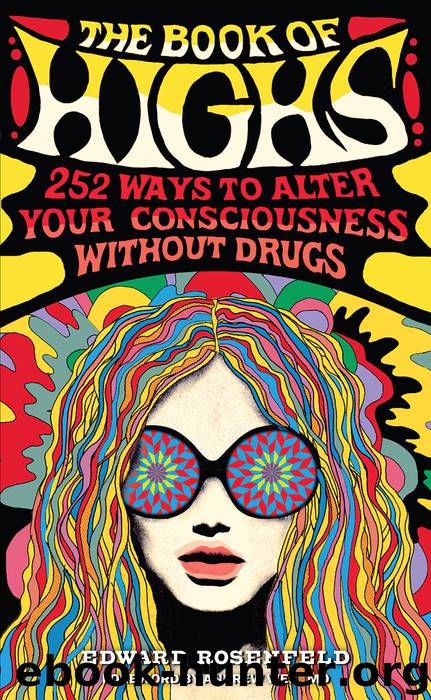The Book of Highs by Edward Rosenfeld

Author:Edward Rosenfeld
Language: eng
Format: epub
Publisher: Workman Publishing Company
Published: 2018-02-14T22:32:24+00:00
118 Maslovian psychology
To transcend, you must first satisfy basic needs.
Maslovian psychology encompasses the work of Abraham Maslow, who was basically a theoretical psychologist in that he did not develop a specific course of treatment for neurosis or psychosis. In fact, his most important contribution to the psychological sciences was his recognition that psychology was lacking a key perspective; one that had made most previous psychological contributions one-sided.
Maslow noted that all psychology was based on psychopathology, or the behavior and processes of sick people. Maslow decided that a new psychology was necessary, a psychology based on healthy people. He called these people self-actualizers (a term first used by the Gestalt psychologist Kurt Goldstein, with whom Maslow studied and worked). In order for someone to reach the highly developed states of consciousness that are self-actualization and, beyond that, self-transcendence, Maslow believed they had to satisfy different tiers of needs, starting with basics like food, love, and safety, then growth needs (e.g., knowledge, aesthetics), then self-actualization (fulfilling your potential), then self-transcendence (helping others, connecting with something beyond oneself). This became known as Maslow’s Hierarchy of Needs.
A major aspect of the lives of these healthy people was their propensity to have what Maslow called peak experiences. Peak experiences are experiences of wonder, awe, ecstasy, altered consciousness, universal oneness, revelation, or transcendental states of being (see No. 90). With his studies of self-actualizers and their peak experiences, Maslow was able to help direct the attention of the psychological world toward developing methods of becoming healthy. This led to the development of Third Force or Humanistic Psychology (as opposed to the behavioristic or psychoanalytic models).
At the time of his death in 1970, Maslow was helping bring about the creation of a new psychology: “ . . . A still higher Fourth Psychology, transpersonal, transhuman, centered in the cosmos rather than in human needs and interests. . . .” Though various aspects of transpersonal psychology have thrived in the years since Maslow’s death (see No. 119), the “still higher Fourth Psychology” he envisioned is still awaiting a more substantial instantiation.
Further Resources
The work in his field by Abraham Maslow begins with Motivation and Personality; finds full development in Toward a Psychology of Being; and is further developed in Religions, Values, and Peak-Experiences, as well as numerous articles published in The Journal of Humanistic Psychology and The Journal of Transpersonal Psychology. Colin Wilson gives a detailed account of Maslow and Maslovian psychology in New Pathways in Psychology: Maslow & the Post-Freudian Revolution.
Download
This site does not store any files on its server. We only index and link to content provided by other sites. Please contact the content providers to delete copyright contents if any and email us, we'll remove relevant links or contents immediately.
Should I Stay or Should I Go? by Ramani Durvasula(7427)
Why We Sleep: Unlocking the Power of Sleep and Dreams by Matthew Walker(6352)
Fear by Osho(4494)
Flow by Mihaly Csikszentmihalyi(4490)
Why We Sleep by Matthew Walker(4190)
Rising Strong by Brene Brown(4190)
How to Change Your Mind by Michael Pollan(4112)
Too Much and Not the Mood by Durga Chew-Bose(4089)
The Hacking of the American Mind by Robert H. Lustig(4083)
Lost Connections by Johann Hari(3915)
He's Just Not That Into You by Greg Behrendt & Liz Tuccillo(3711)
Evolve Your Brain by Joe Dispenza(3500)
The Courage to Be Disliked by Ichiro Kishimi & Fumitake Koga(3253)
Crazy Is My Superpower by A.J. Mendez Brooks(3201)
What If This Were Enough? by Heather Havrilesky(3197)
Resisting Happiness by Matthew Kelly(3194)
Descartes' Error by Antonio Damasio(3164)
The Book of Human Emotions by Tiffany Watt Smith(3139)
In Cold Blood by Truman Capote(3135)
